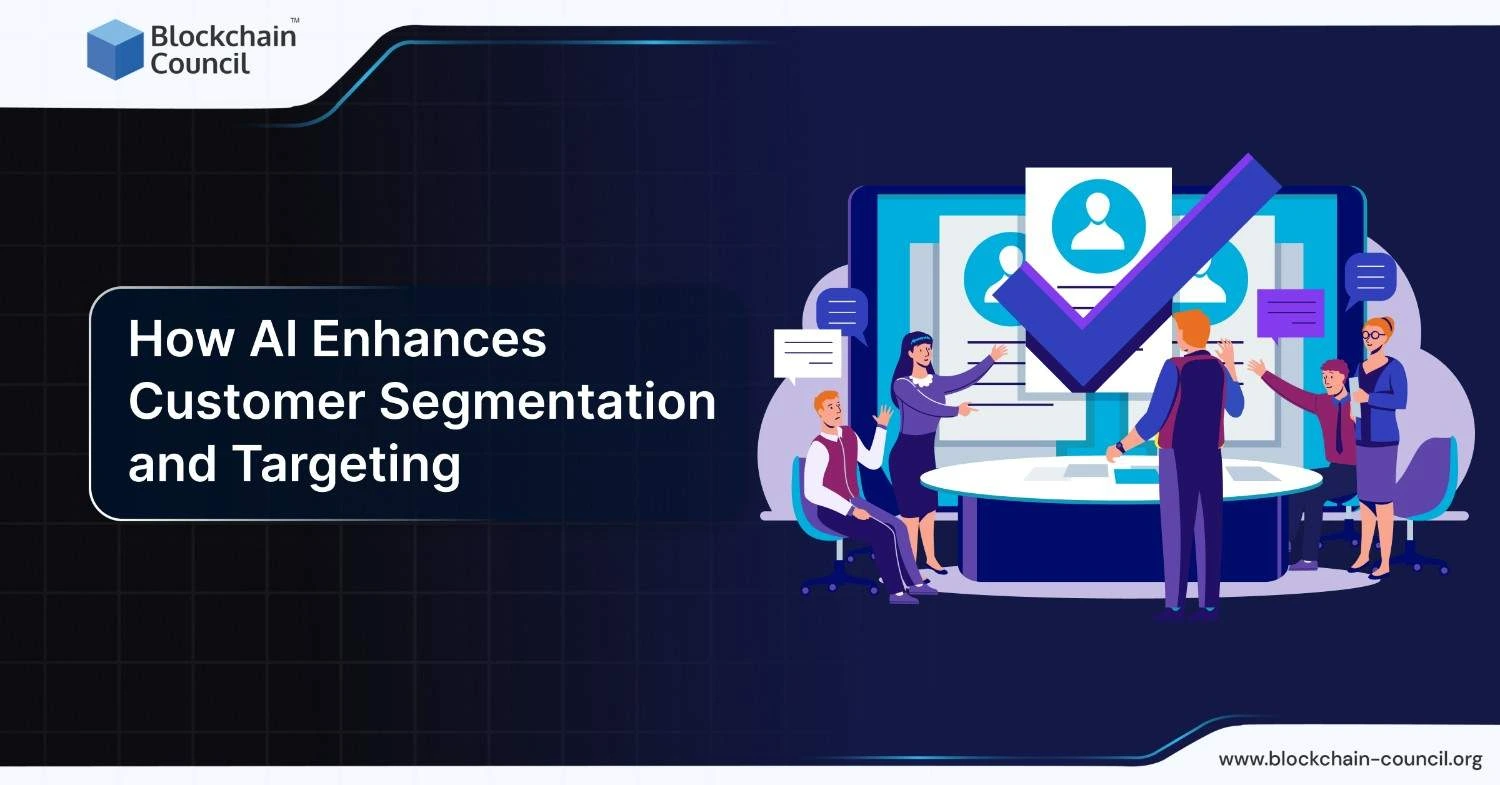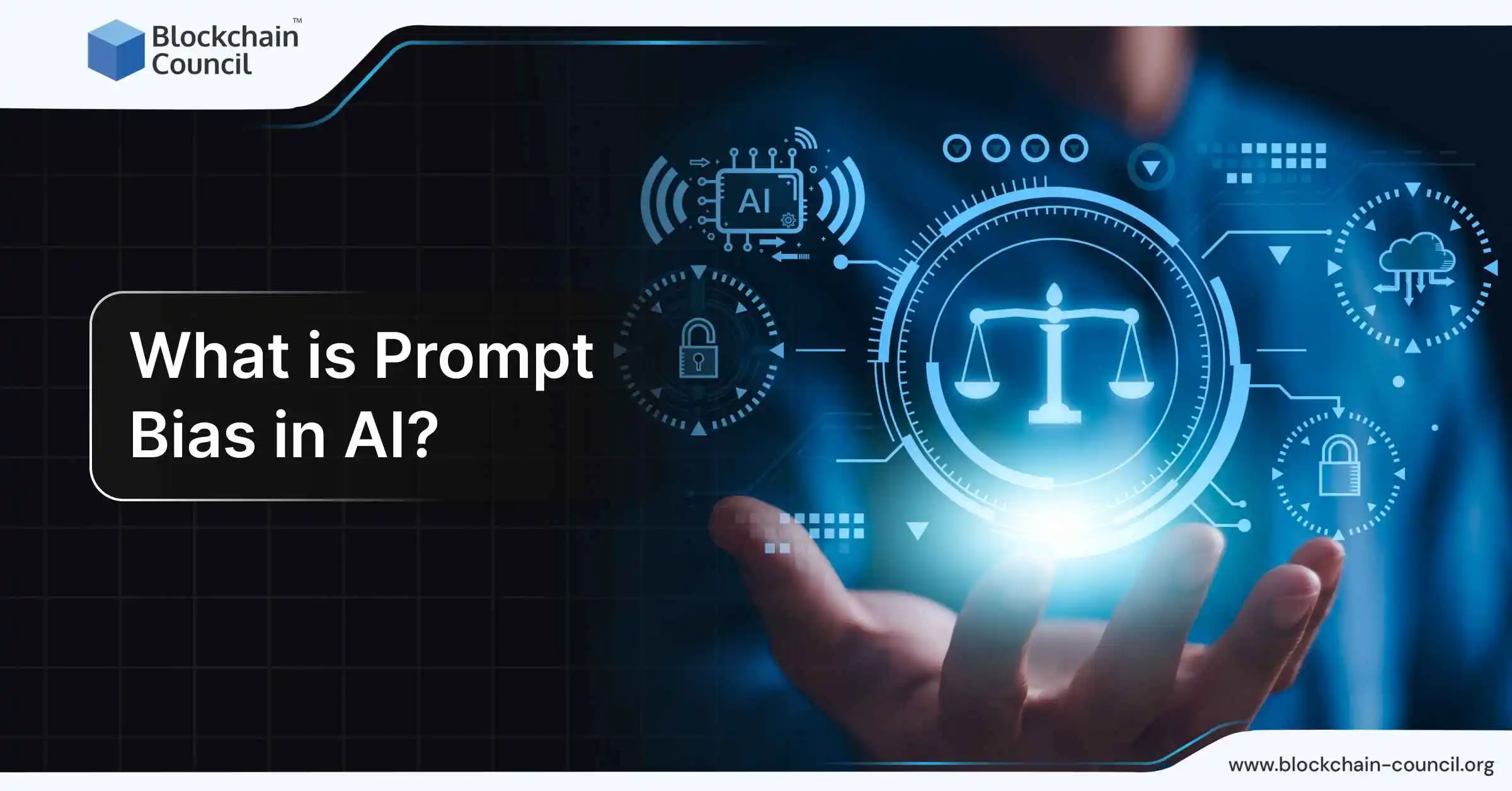
- Blockchain Council
- October 21, 2024
Customer segmentation involves dividing customers into smaller groups based on common characteristics. These traits can range from demographic details like age or location to behavioral factors such as buying habits. Traditionally, this process required a lot of manual work, often leading to broad groupings that missed important nuances. AI has shifted this process, enabling more accurate, data-based segmentation, which enhances targeting.
With AI, businesses are no longer limited to demographic data. They can now integrate behavioral, psychographic, and geographic factors into their segmentation models. This broader insight helps marketers reach each group more effectively with messages that connect with them, leading to better outcomes and more engagement.
Advantages of AI-Driven Targeting and Segmentation
1. Increased Customization
AI-powered segmentation allows for highly personalized marketing efforts. By observing customer behaviors in real-time, businesses can identify distinct patterns and preferences. For example, clothing retailers often use AI to categorize shoppers based on actions like browsing or purchasing behavior. They may identify “budget-conscious shoppers” or “trend-focused buyers,” customizing offers and messages to match each group’s preferences. This type of personalization typically results in better engagement and higher conversion rates.
2. Improved Targeting for Better Results
A key advantage of AI-based segmentation is more accurate targeting. AI processes large amounts of data, including online behaviors and purchase histories, allowing companies to design campaigns that reach the right people at the right moment. For instance, Starbucks uses a system called Deep Brew, which predicts what a customer may order based on their previous choices, time of day, or even the weather. Through such targeted suggestions, Starbucks has greatly improved satisfaction and sales. Data-driven targeting like this helps companies use their marketing budgets more efficiently, increasing returns.
3. Enhanced Understanding of Customers
AI allows companies to gain a deeper insight into customer behaviors. These systems reveal hidden connections in data that human marketers may not easily detect. For example, AI can forecast future behaviors, such as identifying which customers may leave soon. Retailers use this information to create retention campaigns, such as offering special deals to valuable customers or those likely to leave. This not only boosts retention but also reduces customer turnover, contributing to higher profits.
AI’s Role in Optimizing Marketing Campaigns
AI goes beyond segmentation and also plays a key part in enhancing marketing campaigns. With the ability to forecast trends and behaviors, AI tools help companies focus their ads, emails, and other content on the most relevant audience. This method helps businesses allocate marketing resources more wisely, avoiding waste on campaigns that don’t perform well.
For instance, Cox Communications used AI to improve its content marketing strategy. The company employed AI tools to automate content planning, which lowered its cost-per-click and increased engagement. This led to a significant jump in pay-per-view conversions, showing how AI can impact returns by increasing campaign precision.
Similarly, healthcare firm Croda used AI-driven social media management to boost organic website traffic. Through a central AI platform to manage social content, Croda increased its digital presence, creating stronger interactions with its audience and improving customer conversion.
AI is supercharging customer segmentation and ROI! The Master Artificial Intelligence (AI) Learning Path will help you level up your skills, so you can hit the bullseye when targeting the right audience and maximizing your marketing efforts.
Real-Life Examples of AI in Customer Segmentation
BuzzFeed’s Personalized Quizzes
BuzzFeed successfully applied AI to enhance user engagement through customized quizzes. AI reviewed users’ answers and adjusted quiz results to fit each person’s profile. This approach greatly increased engagement, showing how AI can enhance content marketing and offer more personalized experiences. By using OpenAI technology, BuzzFeed showed how AI personalization can go beyond traditional methods to improve user experience.
Coca-Cola’s Voice AI
Coca-Cola added Voice AI into its marketing, delivering personalized experiences for its audience. This strategy allowed the brand to build closer relationships by interacting with customers in more engaging ways. This example demonstrates how AI can help businesses connect with diverse customer segments on different platforms.
Starbucks’ Predictive AI
Starbucks’ Deep Brew is another great case. It examines customer data, including past orders, location, and even external factors like weather, to make real-time product recommendations. This system has enhanced the customer experience and led to increased sales, as recommendations are tailored to each person’s preferences.
Verizon’s Customer Retention
Telecom giant Verizon has employed AI to identify customers at risk of leaving. By studying behavior patterns, AI can detect signs that suggest a customer is about to churn. Verizon then targets these individuals with special retention offers, helping lower turnover and increase customer value over time.
Amazon’s Recommendation System
Amazon is known for its sophisticated AI recommendation engine. It segments customers based on purchase histories, items viewed, and browsing time. This helps Amazon deliver personalized ads, emails, and suggestions. Using AI tools like Amazon Personalize, the company has significantly boosted engagement and sales.
Netflix’s Content Strategy
Netflix heavily relies on AI to shape its content strategy. The platform uses data to group users based on their watching habits and preferences. This not only helps Netflix recommend content but also influences what shows or movies they decide to acquire or produce. This ensures that their investment aligns with what certain user groups are likely to enjoy, improving both satisfaction and retention.
Challenges in AI-Powered Segmentation
While AI-powered segmentation offers many benefits, it does come with some challenges. Data privacy is a top concern, as companies need to ensure customer data is collected and stored securely. Algorithmic bias is another issue because AI tools depend on historical data, which might be biased. If left unchecked, this could create unfair segments that alienate specific groups. Therefore, businesses must monitor and fine-tune their AI systems to ensure fairness.
Integrating AI with existing systems can also be tricky. Companies need to account for factors like data accuracy and the quality of their infrastructure since AI-based segmentation relies on correct and detailed data for it to work effectively.
Best Practices for Using AI in Segmentation
To get the most out of AI-powered segmentation, businesses should follow certain practices:
- Data Accuracy: Ensure that all customer data is updated and accurate, as AI needs clean data for meaningful results.
- Choosing the Right Tools: Pick AI tools that align with specific business goals, as different platforms serve different purposes.
- Continuous Adaptation: AI-based segmentation isn’t a one-time thing. As customer habits shift, businesses must update their segmentation strategies to remain effective.
Conclusion
AI is changing how companies approach customer segmentation and targeting. By analyzing large data sets, AI offers a more detailed understanding of customer behavior, leading to better-targeted marketing efforts. This results in higher engagement, improved retention, and better returns.
However, companies must tackle issues like data privacy and bias to make the most of AI’s potential. As the technology grows, it will continue to play an important role in how customer segmentation develops.





































































 Guides
Guides News
News Blockchain
Blockchain Cryptocurrency
& Digital Assets
Cryptocurrency
& Digital Assets Web3
Web3 Metaverse & NFTs
Metaverse & NFTs
